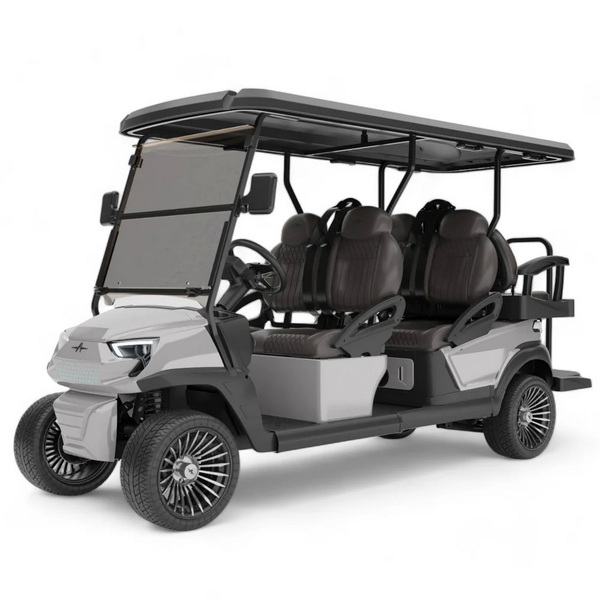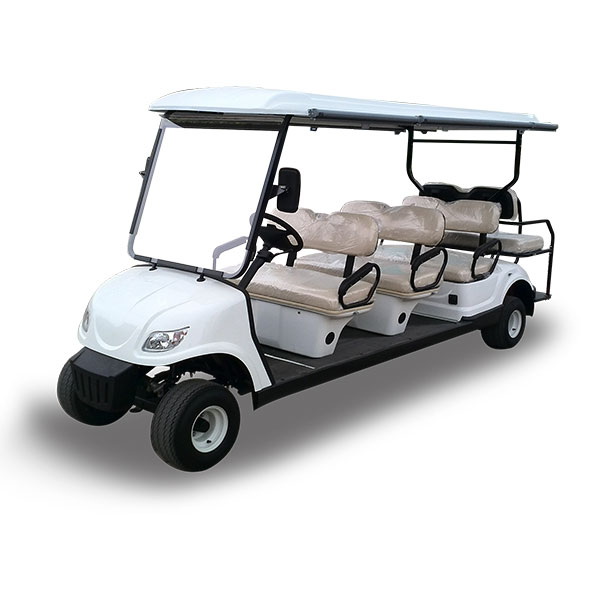Content Menu
● Understanding Electric Golf Carts
● Factors Influencing Runtime
● Average Runtime
>> Detailed Breakdown of Runtime Factors
● Maintenance Tips for Longer Runtime
>> Additional Maintenance Practices
● Environmental Considerations
● Conclusion
● FAQs
>> 1. How long does an electric golf cart run on a full charge?
>> 2. What type of battery lasts longer in electric golf carts?
>> 3. Can I use my electric golf cart in wet conditions?
>> 4. How do I know when it's time to replace my golf cart batteries?
>> 5. Are electric golf carts suitable for off-road use?
Electric golf carts have surged in popularity, not just on golf courses but also in residential areas, parks, and other recreational spaces. One of the most frequently asked questions by potential users is: What is the runtime of an electric golf cart? This article will delve into the factors that influence the runtime of electric golf carts, explore different battery types, maintenance tips, and more.

Understanding Electric Golf Carts
Electric golf carts are powered by batteries, which can vary in type and capacity. The most common types of batteries used in electric golf carts are lead-acid batteries and lithium-ion batteries. Each type has its own advantages and disadvantages that can significantly affect the cart's performance and runtime.
- Lead-Acid Batteries: These traditional batteries are relatively inexpensive and widely available. However, they are heavier and have a shorter lifespan compared to lithium-ion batteries. Lead-acid batteries typically last around 4 to 6 years with proper maintenance.
- Lithium-Ion Batteries: Increasingly popular due to their lightweight design and longer lifespan, lithium-ion batteries can last up to 10 years or more. They provide a more consistent power output and charge faster than lead-acid batteries, making them a better investment in the long run despite their higher initial cost.
Factors Influencing Runtime
The runtime of an electric golf cart can vary significantly based on several factors:
- Battery Type: As mentioned, the type of battery directly affects how long the cart can run on a single charge.
- Weight Load: Heavier loads can decrease runtime as the motor has to work harder to move the cart.
- Terrain: Steep inclines or rough terrain will consume more energy compared to flat surfaces.
- Speed: Higher speeds require more power, which can reduce overall runtime.
- Temperature: Extreme temperatures can affect battery performance; cold weather may decrease efficiency.
- Driving Habits: Aggressive driving or frequent stops can lead to increased battery drain.
Average Runtime
On average, electric golf carts can run anywhere from 20 to 40 miles on a single charge. This translates to approximately 4 to 8 hours of continuous use under normal conditions. However, these figures can vary widely based on individual circumstances, including those factors previously mentioned.
Detailed Breakdown of Runtime Factors
1. Battery Capacity: The capacity of the battery is measured in amp-hours (Ah). A higher Ah rating generally means a longer runtime. For instance, a 48V battery with a capacity of 100Ah may provide significantly longer usage than one with only 50Ah.
2. Motor Efficiency: The efficiency of the motor plays a crucial role in determining how much energy is consumed during operation. More efficient motors will draw less power for the same output.
3. Tire Condition and Pressure: Properly inflated tires reduce rolling resistance, allowing for better energy efficiency. Under-inflated tires increase drag and reduce overall distance traveled.
4. Environmental Conditions: Wind resistance can also play a role; driving against strong winds may reduce range as more energy is required to maintain speed.
5. Battery Age and Health: Older batteries may not hold charge as effectively as new ones. Regular maintenance and monitoring of battery health are essential for optimal performance.

Maintenance Tips for Longer Runtime
To ensure that your electric golf cart runs efficiently and has a longer runtime, regular maintenance is crucial. Here are some tips:
- Regularly check battery water levels (for lead-acid batteries) and avoid overcharging.
- Keep the tires properly inflated to reduce drag.
- Clean the battery terminals to prevent corrosion.
- Store the cart in a climate-controlled environment when not in use.
- Use the cart efficiently by avoiding heavy loads and aggressive driving.
Additional Maintenance Practices
1. Routine Inspections: Conduct regular inspections of all components including brakes, lights, and electrical systems to ensure everything is functioning correctly.
2. Battery Cleaning: Clean your battery terminals regularly using a mixture of baking soda and water to neutralize any acid that might have leaked out.
3. Charging Practices: Always use a compatible charger for your battery type. For lithium-ion batteries, smart chargers are recommended as they prevent overcharging.
4. Seasonal Maintenance: Before winter or extended periods of non-use, fully charge your batteries and store them properly to avoid deep discharge damage.
5. Professional Servicing: Consider annual professional maintenance checks to ensure all systems are functioning optimally.
Environmental Considerations
Electric golf carts are often seen as a more environmentally friendly option compared to gas-powered carts. They produce zero emissions during operation, which is beneficial for maintaining clean air quality, especially in residential areas and golf courses. However, it's essential to consider the environmental impact of battery production and disposal. Opting for lithium-ion batteries can be a more sustainable choice in the long run due to their longer lifespan and recyclability.
Conclusion
In summary, the runtime of an electric golf cart can vary based on several factors including battery type, weight load, terrain, speed, temperature, and driving habits. On average, you can expect an electric golf cart to run between 20 to 40 miles on a single charge, translating to about 4 to 8 hours of use. By following proper maintenance practices and understanding best usage practices, you can maximize both efficiency and longevity while enjoying eco-friendly transportation options.

FAQs
1. How long does an electric golf cart run on a full charge?
On average, an electric golf cart can run between 20 to 40 miles or approximately 4 to 8 hours on a full charge depending on various factors such as terrain and load.
2. What type of battery lasts longer in electric golf carts?
Lithium-ion batteries generally have a longer lifespan compared to lead-acid batteries, lasting up to 10 years or more with proper care.
3. Can I use my electric golf cart in wet conditions?
Most electric golf carts are designed for light rain but should be kept away from heavy rain or flooding to prevent damage.
4. How do I know when it's time to replace my golf cart batteries?
Signs include reduced runtime, difficulty holding a charge, or visible corrosion on battery terminals.
5. Are electric golf carts suitable for off-road use?
While some models are designed for off-road conditions, most standard electric golf carts are optimized for paved surfaces.










































